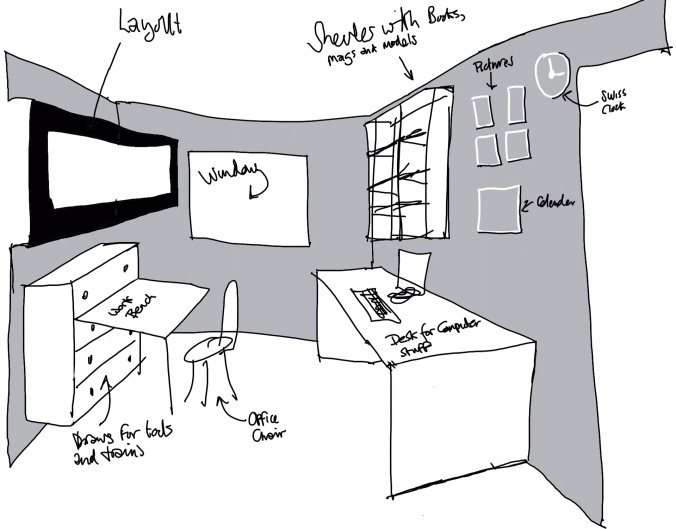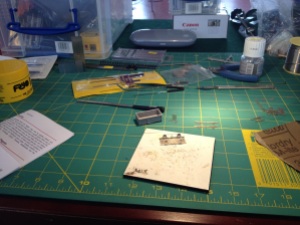
Arrgghhh, I started out last night writing this post almost getting to end when virtually all my hard thought prose were wiped off the face of the planet. When will I ever learn as this is not the first time I have been stung this way and thinking that writing the post in the WordPress app on my mobile device is a good idea. So from now on these posts will be hand crafted away from the web and then pasted in at the last moment. In this day and age I’m surprised that this still can happen and that web coders can’t have a back button on the WordPress app but that’s going way off topic.
Ok, so finally something to show for effort and not just a blathering post about thoughts and plans, and what magazines I have been buying. As the observant of you will notice yes this is a bit of dual gauge track, but don’t look too closely at the soldering! It’s been some time since I last picked up the iron in anger and had to go through all the faff of digging out all the required bits and pieces such as solder and flux etc and then remember what temps I needed to set it at. That being said I have finally managed to light a bonfire under the mojo and get cracking with project 1 here at 15minutemodeller headquarters. Also in this pic is the baseboard knocked up to start this project off. For once no lengthy planning sessions were carried out in order to ascertain the optimum design, no 3D mockups to waste some more time creating cutting lists that would have made the builders of the Cutty Sark blush. No this was literally two lumps of batten chopped up and a chunk of ply grabbed from the wood pile and screwed and glued together in a blink of an eye. Unheard of? Yes! It’s certainly not beautiful but certainly functional if just a bit on the heavy side but then again I wasn’t going for experimental lightweight forms.
Now the reason for this test track is two fold; firstly to act as a 9 millimetre-ish and I say this as I plan to be able to use it for both my Kato stuff and also for some future 2mmFS plans as they can share the same gauge with no problems it’s only when switches are introduced that it becomes a bit sketchy. Yes I Know I said I was forsaking all other distractions but the reality is that I know I am never going to be able to limit myself to just one thing and also my plans for 15minutemodeller have changed to allow for my inveterate rubber gauge tendencies and hopefully more will be revealed over time.
Then the reason for the second and narrower gauge is to accommodate the testing my collection of both American and Swiss Z scale that I have now finally decided to liquidate. In order to put the locos on a well know auction site I need to check to see if there running ok as it is an not insignificant amount of time since I last took them out of there boxes and ran them. Plonking and extra rail on the test track to facilitate this is no real extra effort and who knows whether it might be of use in the future. Just after building the board rummaging through the boxes I uncovered the rolling road I brought many moons ago, in fact not just one set but two, jeez that was a time of way too much money and little sense although in this case it paid off as going forward I will be using these to run locos in, but then there is something relaxing about watching a train trundling around a track. We’ll see how long the test track survives after the locos it’s built for have left the building.
Just as a side note one can build hand laidback with nothing but a set of callipers either manual of digital and you don’t need fancy brass gauges in order to build something operational, points/switches may be a little more challenging but not impossible. So to get the very rusty soldering muscles going I built a very small section of straight dual gauge from a recycled point I made for another project years ago, to test out the workflow needed to build the full circle and I’m glad I did it as it point out some failings in my thinking about how I was going to put things together.
It’s great to smell the aroma of 60/40 again and now that I have the platform to build on I just need to get some metal down.
Until next time..

 In planning the track for the diorama I needed to find out what the height differentials were between the types I am looking at using. In order for the scenic section to look somewhat realistic I decided on using some Peco Code 55 FS Concrete Sleepered track and then was contemplating a mixture of
In planning the track for the diorama I needed to find out what the height differentials were between the types I am looking at using. In order for the scenic section to look somewhat realistic I decided on using some Peco Code 55 FS Concrete Sleepered track and then was contemplating a mixture of 












Recent Comments